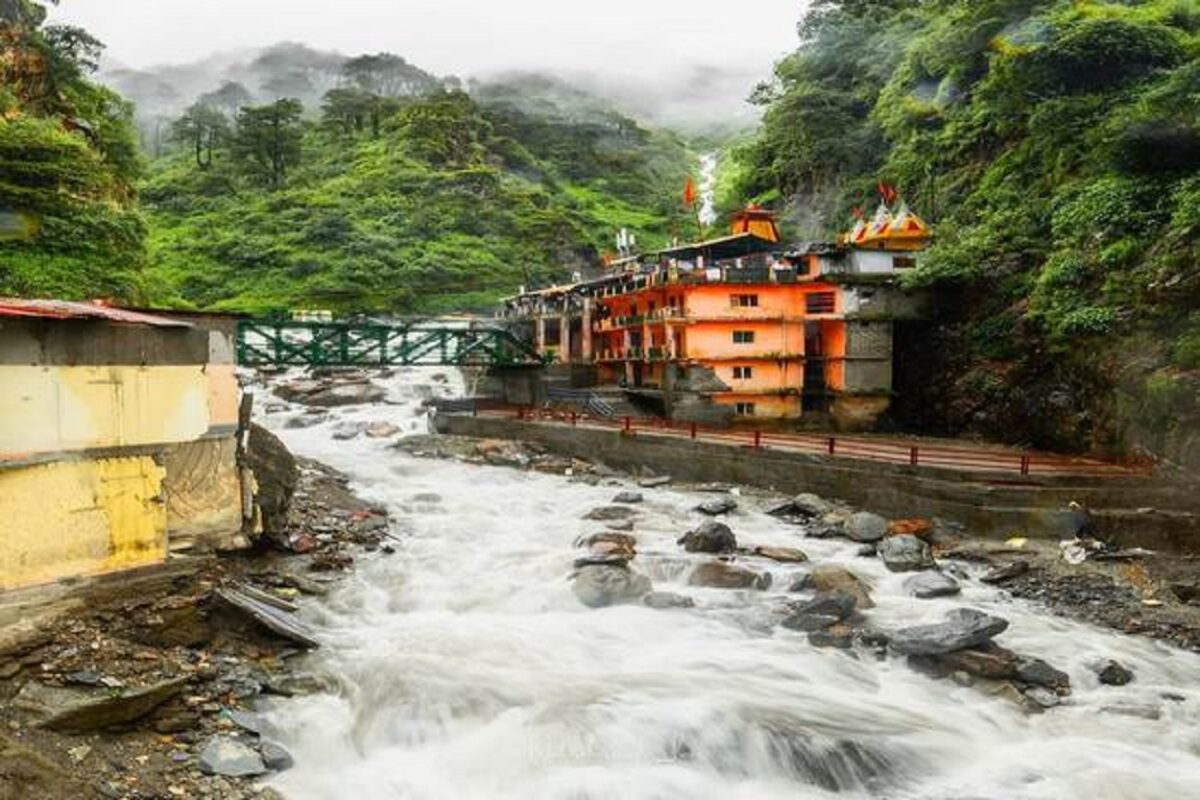
Yamunotri Dham Yatra By Helicopter From September to October 2023
Yamunotri yatra is the first of Uttarakhand’s Four sacred Dham pilgrimages. Here, the Sun’s daughter and Yamraj’s sister, Goddess Yamuna, is worshipped. Yamraj is the “God Of Death,” so people venerate goddess Yamuna and bathe in the Yamuna River to extend their lives and cleanse themselves of sins.
Detailed description of the trip
Yamunotri yatra Dham is the first of Uttrakhand’s four sacred Dhams, also known as the Chota Chardham. This holy and exciting voyage begins in “Hari Ka Dwar,” the city of god known as Haridwar. There are two routes to access Yamunotri yatra Dham: the Shimla bypass road and the Mussoorie road.
The main route from Haridwar to Dehradun leads to Mussoorie via the Raipur road. Here, a stop is made to witness the beautiful natural waterfall known as Kempty waterfall. Kempty fall is renowned for its aquatic sports and is a popular destination for children. After savouring and unwinding at Kempty fall, you will continue your journey to the Yamuna bridge, which is approximately 25 kilometres from the waterfall. From the Yamuna bridge, you will be able to take in a breathtaking view of the Yamuna River.
The alternative route, which was the Shimla bypass road via Chakrata, will bring you to the Yamuna bridge. Yamuna bridge is the convergence location of both Yamunotri pilgrimage routes. The Yamuna river flows towards Chakrata on the Yamuna bridge’s abutment. As the voyage progresses, you will encounter a lovely town known as Nainbagh. Nainbagh is a small village in the Tehri district of Uttarakhand that is renowned for its scenic beauty. It also serves as the confluence of three districts of Uttarakhand, namely Dehradun, Tehri, and Uttarkashi. It is situated on the bank of the Yamuna River and offers the best view of the Yamuna River. You will encounter additional towns, such as Purola and Damta village, where you can soak your spirit and body in the Yamuna River.
From Damta village, the route splits in two, with one branching off to Barkot and Yamunotri Dham on the right and the other branching off to Lakhamandal on the left. It is also known as “Pauranic Lakhamandal,” where the “Pauranic Pandav Gufa” is located; this location is significant in the Mahabharata epic. Pandavas were sent to Lakhamandal incognito by the Kauravas when they hatched a plot to ensure that the future monarch would be among themselves and not the Pandavas. The Kauravas constructed a palace with the intention of setting it on fire so that the Pandavas would perish there. However, the Pandavas were blessed by Lord Krishna. A rodent excavated a cave which saved them. Even now, we have a view of the cave where carbon was created by fire. After taking in the breathtaking view of Lakh amandal, the voyage to Barkot begins.
Barkot is a village on the banks of the Yamuna with the most breathtaking panorama and natural beauty. This is the last village before Yamunotri Dham where you can find hotels with all the amenities of city life. You can unwind and prepare for the forthcoming journey to Yamunotri yatra Dham. After getting ready and eating breakfast in the morning, the journey from Barkot to Hanuman Chatti will commence. Hanuman Chatti is so named because it is the confluence of two rivers, namely the Yamuna and the Hanuman Ganga. Now, by travelling approximately 5 kilometres, you will reach Janki Chatti. Janki Chatti is the starting site for the 6 km trek to Yamunotri yatra Dham, which begins at Janki Chatti.
On the way to Yamunotri Dham, you can see a temple in Kharsali village where the Doli of Goddess Yamuna descends for six months during the winter, when the main temple is closed. People who are unable to trek can choose to ride a horse or a Palki; if they choose to trek, they can use a walking staff to complete the journey. The first temple you will encounter is the “SHANI TEMPLE” which is approximately 3 kilometres from the Yamunotri temple. When you pass this temple and continue walking for 1 kilometre, you will reach “BHAIRAV TEMPLE.” Goddess Yamuna was the daughter of the Sun, and Shani dev was her brother; therefore, everyone worships Shani dev prior to worshipping Goddess Yamuna.
The trek to the temple begins approximately half a kilometre before the Yamunori temple, where the temple’s market is located. There are numerous stores selling puja thalis that include “Mata Ka Shringar” and other flowers and fruits for temple offerings. You must bathe in Gauri Kund before proceeding to darshan. As you advance for darshan, you will see the temple of Yamraj, the brother of the goddess Yamuna. Then you will see Divya Shila, and then you will enter the main temple. Inside the temple, you will be standing in a queue, and when it is your turn, the pujari will take your thali and offer the Prashad to the goddess, as well as remove some Prashad from the “garb grah” and place it in your thali. There is a heated water Kund known as “Surya Kund” where rice is immersed and cooked in a Potali. In 15 minutes, the meat is nearly completely cooked before being offered to birds and crows. Purohit can also perform “Anushthan,” a minor puja with mantra chanting, at your request. After receiving darshan, you will trek back to Janki Chatti and then return to your hotel in Barkot via car. And with that, the pilgrimage to the first Dham, Yamunotri, concludes.
Hare Krishna Golden Temple or also known as Swayambhu Sri Lakshmi Narasimha Kshetram, a 1000-year-old temple in Hyderabad and part of the ISKCON Bangalore group of temples, organises wonderful yatras to this punya kshetra. The Akshaya Patra Foundation, HKMCF, Vrindavan Chandrodaya Mandir – the world’s tallest temple in Vrindavan, etc. are among our affiliated organisations.
